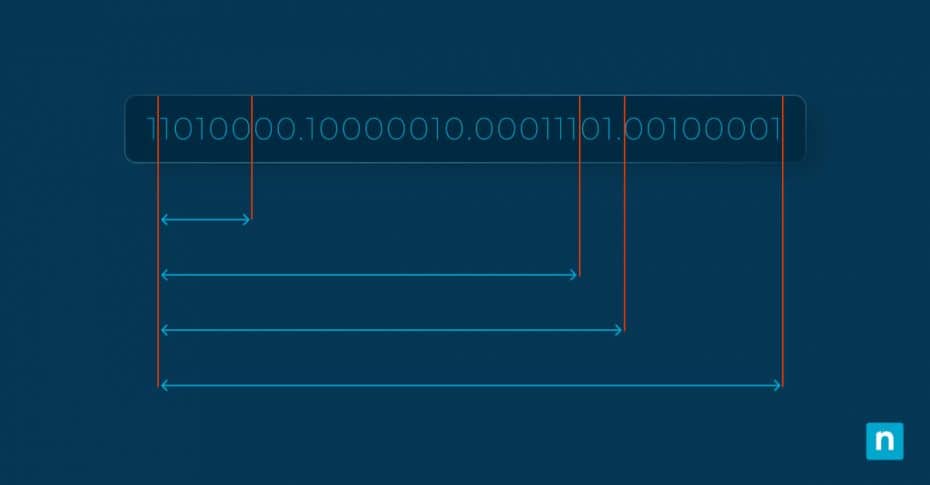In the early 1990s, as the digital world stood on the cusp of an explosive expansion, the foundational structure of the internet faced a critical challenge: the classful IP addressing system was buckling under its own rigidity and inefficiency. Locked into fixed classes (A, B, and C), this system squandered valuable IP space, leaving the burgeoning network gasping for air as it grappled with rapidly depleting IP addresses. The ballooning routing tables, weighed down by this archaic structure, turned network management into a Herculean task.
Enter Classless Inter-Domain Routing (CIDR) in 1993 — a paradigm shift that redefined the landscape of IP address allocation and routing. CIDR, with its groundbreaking variable-length subnet masking, burst onto the scene as a beacon of efficiency. It transformed the way IP addresses were utilized, maximizing every bit of the digital spectrum and simplifying the once cumbersome routing tables.
This bold move not only alleviated the IP address scarcity but also streamlined the entire routing process, heralding a new era in network management and setting the stage for the Internet’s rapid expansion.
What is CIDR?
CIDR is a system for allocating IP addresses and managing IP routing. It stands as a departure from the traditional classful IP addressing system, which divided the IP address space into fixed blocks based on classes (A, B, and C). CIDR introduces a more flexible and efficient approach, using variable-length subnet masking (VLSM) to allocate IP addresses. This method allows for a more precise allocation of IP space, tailored to the specific needs of a network, rather than adhering to the rigid constraints of predefined classes.
CIDR’s importance in modern networking is undeniable. It plays a crucial role in optimizing IP address usage, a vital aspect in the face of the limited number of available IPv4 addresses. CIDR allows for the division of IP address space into subnets of varying sizes, enabling a more efficient and judicious use of the address space. This efficiency is particularly critical in conserving and extending the lifespan of the IPv4 address pool.
Beyond IP address allocation, CIDR significantly impacts routing. It allows for the aggregation of routes into a single CIDR block, thereby decreasing the amount of entries in routing tables. This reduction is critical in enhancing routing efficiency and performance. By simplifying routing tables, CIDR not only improves the speed and accuracy of routing decisions but also reduces the overall complexity of network management.
CIDR’s introduction marked a transformative moment in networking, providing a scalable and efficient solution to the challenges of IP address depletion and routing inefficiency. Its relevance continues to be paramount in the context of growing networks and the ongoing need for efficient IP management.
How Does CIDR Work?
CIDR’s introduction marked a significant advancement in IP network management by introducing flexible subnetting, efficient route aggregation, and longest prefix match routing. These mechanisms allow for more efficient use of IP addresses, reduced routing table sizes, and more precise routing decisions. In both LANs and NAT-based environments, CIDR’s flexibility and efficiency represent a considerable improvement over the limitations of classful routing, showcasing its essential role in modern network infrastructure.
Flexible subnetting in LANs
- CIDR vs. Classful routing: Unlike classful routing, which imposed fixed subnet sizes based on address classes, CIDR allows for variable-length subnet masks. This flexibility enables precise network segmentation in LANs.
Example: In a LAN, a CIDR block like 192.168.1.0/24 can be efficiently divided into smaller subnets such as 192.168.1.0/25 or 192.168.1.128/26, optimizing the IP address allocation based on actual departmental needs.
IP address aggregation
- Classful routing limitation: Classful routing required separate routing table entries for each network, leading to large routing tables.
- CIDR improvement: CIDR facilitates the aggregation of multiple networks into a single entry, reducing routing table sizes.
Example: Networks 150.100.0.0/16 and 150.101.0.0/16 can be aggregated into a single entry as 150.100.0.0/15 in CIDR.
Longest prefix match routing
- Classful routing approach: Classful routing lacked the granularity in routing decisions, using direct matching based on class boundaries.
- CIDR’s approach: CIDR uses longest prefix match routing, where the router selects the route with the longest matching subnet prefix.
Example: For a packet destined for 192.168.1.50, with routes to 192.168.1.0/24 and 192.168.1.0/26 available, CIDR will choose the /26 route as it provides a more specific match.
CIDR in NAT-based firewalls/routers
- Use in NAT: CIDR’s flexibility enhances the efficiency of NAT (Network Address Translation), allowing a single public IP to represent a range of private IP addresses.
Example: A router can use NAT to translate a private CIDR block like 192.168.1.0/24 to a single public IP, efficiently managing internal and external IP addresses.
- PAT integration: Combined with Port Address Translation (PAT), CIDR enables multiple internal devices to share a single public IP address, with different port numbers distinguishing the internal hosts.
Example: Multiple devices in a 192.168.1.0/24 network can access the internet using a single public IP, with the router managing the connections using different ports for each internal device.
Key benefits of CIDR
To better understand the benefits of CIDR compared to classful routing, let’s look at them side by side:
| Feature | Classful routing | CIDR (Classless Inter-Domain Routing) |
| IP address allocation efficiency | Fixed IP blocks leading to wastage. | Variable-sized subnets reducing IP wastage. |
| Network sizing | Based on predefined classes, often inefficient. | Based on actual usage, optimizing IP address use. |
| Subnet flexibility | Constrained by rigid class structures. | Allows for subnets of varying sizes, suitable for diverse requirements. |
| Routing table size | Larger routing tables due to separate entries for each class. | Smaller routing tables due to route aggregation. |
| Routing process | Simplistic but less efficient, no route aggregation. | More efficient with aggregated routes, enhancing routing decision speed. |
| Network scalability | Limited, struggles with growing network demands. | Enhanced, supports the expansion and evolution of networks. |
| Practical network management | Less flexible, poses challenges in complex networks. | Provides practical advantages in managing modern, complex networks. |
CIDR’s introduction marked a significant advancement in network management, providing solutions to the limitations of classful routing. Its benefits in IP address allocation efficiency, subnet flexibility, routing process simplification, and network scalability have been fundamental in shaping the efficiency and growth of modern networks. The benefits of CIDR extend beyond technical improvements – they also include practical advantages in network management.
Looking to the future of networking
CIDR’s flexibility extends to a wide range of applications, including IoT (Internet of Things) networks and cloud computing environments. In IoT, CIDR allows for the efficient allocation of IP addresses to countless interconnected devices, contributing to the seamless operation of IoT ecosystems. Moreover, in cloud computing, CIDR plays a crucial role by optimizing IP address utilization, reducing costs, enabling seamless management of cloud-based networks, and facilitating the horizontal scaling required for modern cloud infrastructure operations.
The efficiency, flexibility, and scalability provided by CIDR are essential in the modern networking landscape, making it a fundamental tool for network administrators and IT professionals. CIDR’s impact on modern networking is especially significant for Linux system administrators, who often rely on its flexibility and efficiency to optimize IP address allocation and routing in Linux-based networks. Given the prevalence of Linux servers and the open-source nature of the platform, CIDR’s ability to tailor IP address management to the requirements of Linux environments plays a crucial role in ensuring seamless network operation and resource utilization.
One of CIDR’s notable advantages is its compatibility with the evolving landscape of IPv6. As the transition from IPv4 to IPv6 continues, CIDR principles remain relevant. IPv6, with its vast address space, benefits from CIDR’s efficient IP allocation methods, ensuring that the best practices introduced by CIDR continue to guide network design and management in the future.
While CIDR was introduced in part to alleviate IPv4 address scarcity, its relevance extends into the era of IPv6. As the eventual transition from IPv4 to the more expansive IPv6 addressing scheme continues, CIDR provides a framework for efficient allocation, even given IPv6’s vast space. For example, an IPv6 subnet allocated using CIDR may have a prefix of 2001:db8:1234::/48, allowing flexible subdivision as needed. Though address depletion pressures may be relieved, CIDR’s route aggregation and flexible allocation advantages will continue to serve critical network infrastructure goals like routing table efficiency and organizational IP allocation control in IPv6 networks.
CIDR implementation and examples
Implementing CIDR in practical networking scenarios involves a strategic approach to IP address allocation and routing. A typical example of CIDR implementation is in subnetting or segmenting a network. Consider a network with an IP address block of 192.168.0.0/24. With CIDR, this block can be divided into smaller subnets, such as 192.168.0.0/25 or 192.168.0.128/26, depending on the specific requirements of the network. This flexibility allows network administrators to tailor the size of each subnet to the needs of different segments of their network, optimizing the use of the IP address space.
When delving into the specifics of implementing CIDR, a few detailed considerations stand out for ensuring successful network design integration:
- Detailed network analysis for IP allocation: Detailed network analysis for IP allocation involves understanding device usage patterns, peak traffic times, and specific requirements like static IPs for servers or dynamic IPs for client devices, enabling size-appropriate subnet design.
- Future-proofing with scalable IP planning: Anticipating growth isn’t just about expecting more devices – it involves understanding potential shifts in technology use, such as the introduction of IoT devices or changes in remote access needs. Allocating IP addresses should include buffer zones for unforeseen growth and flexible subnetting strategies that can adapt to changes without requiring a complete overhaul.
- Subnetting strategy for optimal performance: When dividing the network into subnets, consider factors like geographical distribution of devices, departmental divisions, and application-specific network segments. This strategic subnetting can reduce latency, manage broadcast traffic more efficiently, and enhance security by segmenting sensitive devices or departments.
- Regular audits and reassessment of routing tables: Beyond just reviewing, perform periodic audits of routing tables for redundancies or unnecessary routes that may have become obsolete. This process keeps the routing process streamlined and prevents routing inefficiencies from creeping in over time.
- Traffic monitoring for proactive network management: Implement advanced network monitoring tools to analyze traffic patterns. This helps in identifying not only bottlenecks but also potential security threats, unbalanced load distribution, or suboptimal routing paths. Adjust CIDR allocations and routing policies based on these insights.
- Training and policy development for CIDR management: Ensure that your network team is well-versed in CIDR principles and practices. Develop clear policies for IP address allocation, subnet creation, and routing configurations. This institutional knowledge is crucial for maintaining consistency and efficiency in the network’s operation.
- Integration with existing infrastructure: Consider how CIDR implementation will interact with existing network infrastructure. This includes compatibility with current hardware, software, and network protocols. Planning for integration minimizes disruptions during the transition to a CIDR-based system.
By focusing on these specific aspects, network administrators can ensure that CIDR implementation is not only technically sound but also aligns with the broader operational and strategic objectives of the network.
Control IP space like a pro. Watch what is CIDR (Classless Inter-Domain Routing) explained and streamline your network.
Addressing the limitations of traditional IP address allocation and routing
CIDR’s introduction marked a significant advance in the efficient use of IP address space and the simplification of routing processes. The flexibility, efficiency, and scalability offered by CIDR are invaluable in the context of the growing and increasingly complex global network infrastructure. CIDR’s impact extends beyond technical improvements, influencing the way networks are designed and managed.
As network demands continue to evolve, the principles of CIDR remain fundamental in ensuring effective and efficient network operation. The adoption of CIDR exemplifies the ongoing innovation in network management, highlighting the importance of adaptive and scalable approaches in the ever-expanding digital landscape. By providing a more flexible and efficient method for IP address allocation and routing, CIDR has revolutionized network management and continues to be a cornerstone of modern networking practices.








